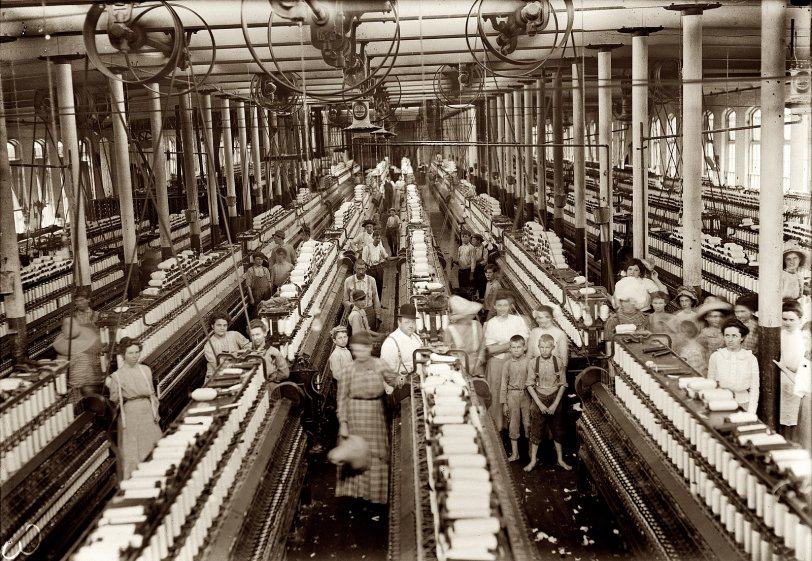


Framed or unframed, desk size to sofa size, printed by us in Arizona and Alabama since 2007. Explore now.
Shorpy is funded by you. Patreon contributors get an ad-free experience.
Learn more.

- Lofty addition
- In 1912
- Keenan Building
- Six years old
- Taken from the P.J. McArdle Roadway?
- It stood only 47 years
- Three track mind
- Incline to the right
- Reach for the sky, 1912 style
- No clean sweep
- Same Job Title, Same Face
- Sadly Lost
- Beautiful ...
- Where you get your kicks
- Aim High
- Pueblo Revival sisters
- Pueblo Neoclassicism
- Milk Man
- Regional dialect.
- Spielberg's inspiration
- Great Photo
- Loaf Story
- Do you still have the Rakes category?
- Could almost be a scene from the 1957 movie 'Hell Drivers'
- The Wages of Fear.
- Conspicuous by their absence
- Got Milk?
- All that aluminum
- No lefties
- Smoke 'em if you've got 'em
Print Emporium
The Spinning Room: 1911

March 1911. Magnolia, Mississippi. "Magnolia Cotton Mills spinning room. See the little ones scattered through the mill. All work." View full size. Photograph (original glass negative) and caption by Lewis Wickes Hine.
What is that thing on her head?
Can anyone identify the white thing on top of the person's head who is standing between the rows on our right side, directly next to the hanging incandescent lamp? Speaking of lamps, electric lamps were still pretty new in 1911. If I'm not mistaken, that was just a few years after Nikola Tesla joined George Westinghouse at Niagara Falls to produce alternating current. I wonder if the power to drive this equipment was electric motors or would it have possibly been steam?
[She's wearing a bonnet. Incandescent lighting, at first using direct current, goes back to the 1870s. - Dave]
Aftereffects
I was a nursing home social worker in rural Alabama in the early 90s, and most of the residents were former employees of West Point Pepperell Mills in town. One woman stands out in my memory. She was in her 80s, deaf, S-shaped spine and bent over nearly double but still walking. Her sharper-minded neighbors reported to me that Mrs. M. had worked in the mill from childhood onward, and that she was bent over because her job was to pick (something, they had a slang word for everything there) off the floor as a child and her spine didn't develop properly. Likely deaf from the racket in there. Her mind was not together any longer, but she showed me how to fold towels in a "double E" as she did for the mill. I still fold them that way!
How did they manage mentally? In that community, family ties were very strong and church was extremely important. They cherished their time at home and church. People very literally took solace in the belief that their reward was coming.
Spin Factory
Just looking at the picture makes me want to put on noise canceling headphones. Imagine the din and the Mississippi summer to come. The people and those children had to have damaged hearing among other maladies. I once visited an Industrial Revolution Era knitting mill somewhere in Michigan, it was operated as a museum, and part of the tour was a switch being thrown and the machinery went into action, we were warned about the noise and they only ran it for a few seconds. To have to work an entire day in that racket had to be a danger to their mental and physical health. Again, so much for the good old days.
























On Shorpy:
Today’s Top 5